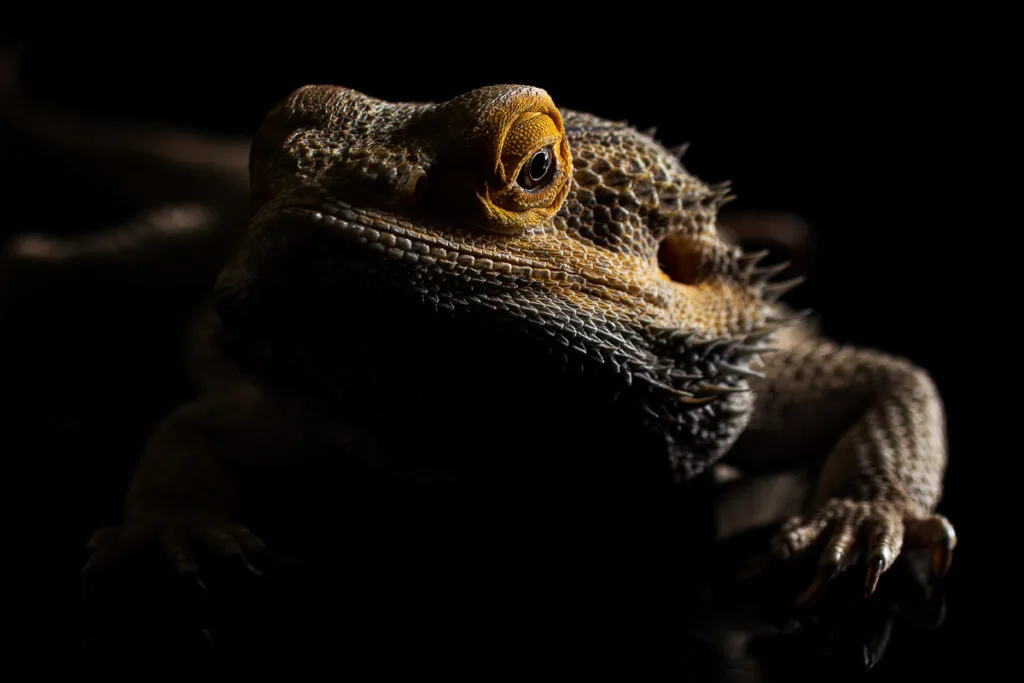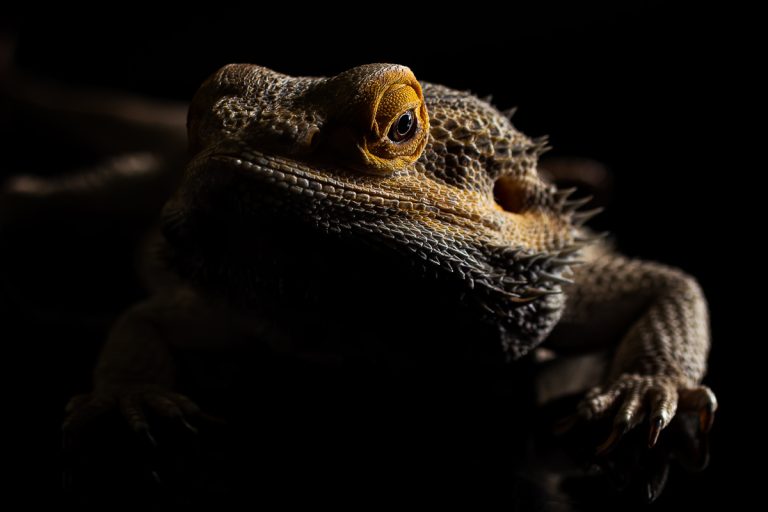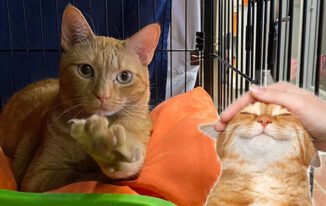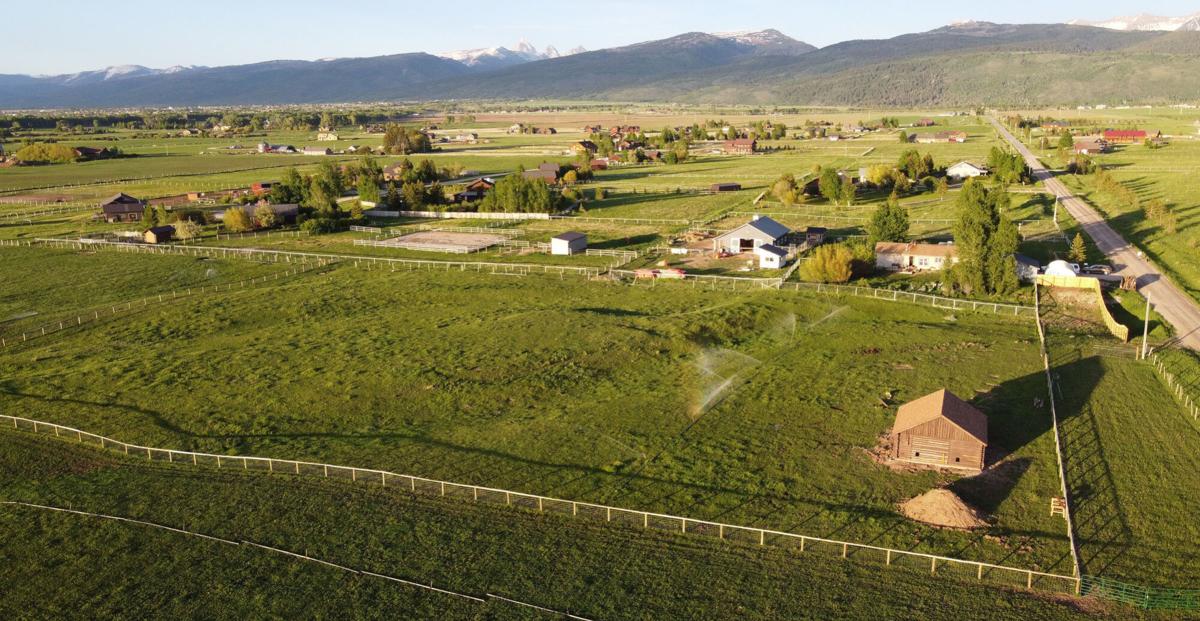Bearded dragons come in many different colors and varieties. One color that a bearded dragon can change to is black. In this article, Dr. Jess will discuss what it means if your bearded dragon turns black in color, if you should be worried, and what you can do about it. Read on for more information on black bearded dragons below:

Bearded Dragon Colors:
The eight species of bearded dragons across the world today, are distinguished from one another and named for the differences in their spines on their chins and necks.
This exotic pet gets their name from their armor of spiny scales, which include a “beard” of spikes under its chin and neck that puffs up depending on their mood, most commonly seen when puffed out upset for them to seem larger to whatever is upsetting them.
They can reach up to 24 inches long and weigh up to 18 ounces once full grown.
They range in colors from brown, to orange, to yellow, to cream, of which colors can change under certain circumstances that will be discussed here shortly.
Bearded Dragon With Black Beard:
If you notice that your bearded dragon has suddenly had a beard color change from their normal color, to one that looks more of a black in color, then it may be completely okay – then again, it may be a sign to worry.
Let’s discuss the reasons why your bearded dragon is turning black, so you know if it is something that you should monitor or contact your veterinarian about.
Black Bearded Dragon:
You do not usually see a black bearded dragon for absolutely no reason – there is typically a reason that they have changed from their normal everyday color, to black.
That being said, there are rare black bearded dragons on the market that are born black or nearly black.
The information below, does not pertain to black beardies, as they are normally black and are not turning black in color.

Black Color Change Reason #1: Angry Lizard
One very common reason why a bearded dragon would turn black, or at least partially black along their “beard” or neck region, is when the bearded dragon is angry or feeling threatened.
Once angered or in fight mode, a bearded dragon will darken their beards to intimidate, as well as open their mouths to show their recipient that they mean business and to back off and not mess with them.
Black Color Change Reason #2: Scared Dragon
When your bearded dragon becomes scared, they may change their color, especially around their beard, just as they may when they are angry or upset.
This color change signifies that the bearded dragon is upset one way or another, whether it is angry or scared.
Check the bearded dragon’s surroundings to make sure that there is nothing in their environment that could potentially be scaring them – other animals, new noises, strong odors or cleaning products, etc.
Black Color Change Reason #3: Brumation
Brumation is a form of hibernation that certain animals, including bearded dragons, go into when food is more scarce and temperatures dip.
However, in captivity, bearded dragons do not necessarily need to go into brumation if husbandry practices are good and well.
Therefore, your domesticated pet beardie may or may not go into brumation.
Brumation can look like other things like a sick bearded dragon, as many of the signs of brumation can also be signs and symptoms of an ill dragon.
If your pet bearded dragon does go through brumation while in your care, you may notice a color change. The dragon may turn a darker color, sometimes as dark as turning to black.
Your beardie may be changing colors to try and grab some warm sun rays to help them warm up. Bearded dragons are lizards and are cold-blooded animals.
These cold-blooded ectotherms rely on their outside environment to regulate their temperature – they can’t do it internally like us humans can.
One easy and quick way for a lizard to increase their temperature is to change to a darker color to absorbs more warm rays from the sun.

Black Color Change Reason #4: Illness
When a beardie is sick, they may very well change colors, and many times its a darker color change, sometimes black. Why is this?
One common reason is lack of blood circulation, which leads to lower body temperatures.
With decreased blood flow due to illness, or with lower body temperatures due to a number of conditions, your ectotherm of a pet (an animal that must use their exterior environment to regulate their internal body temps) will darken their skin color in order to absorb more heat, therefore warming their bodies from the outside in.
Black Color Change Reason #5: Mating Season
Mating time can be a color-changing time in the male bearded dragon’s life.
That’s right, male bearded dragons commonly are seen with darker, and almost black beards during their mating time, helping them attract the top female with an even darker beard.
On top of a darker beard, the male beardie may also bob his head in order to win the attention of a lovely suitor.
Black Color Change Reason #6: Poor Husbandry Practices
Poor husbandry practices, also known as poor caretaking, can cause a darkening change of color in your dragon.
When poor husbandry occurs for a prolonged period of time, the ill-kept beardie can become sick.
The sick bearded dragon can then turn black in color due to the slow blood circulation and lower body temperature as discussed in the above “sick” section.
How Do Bearded Dragons Change Colors?
Bearded dragons are capable of segmenting or sectioning their body color to specific parts of their bodies because they have cells that are referred to as chromatophores that contain pigments that reflect different wavelengths of light, and therefore change the color of their skin to the naked eye.
What To Do If Your Bearded Dragon Turns Black:
The first thing to do is notice any other changes in your lizard’s behavior – are they eating, drinking, normally? Has their activity level changed?
If nothing behaviorally has changed, note their physical environment – check to see that the temperature and humidity requirements are correct.
Make sure that they are eating a safe and well-balanced diet for bearded dragons.
Fresh water and adequate space in their enclosure where they have multiple options to climb, hide, and bask under heat lamps is necessary.
Next stop – check on their relationship status – could they be in search of a mate? Could another pet be upsetting them?
Summary:
Bearded dragons can be born black in color. However, more commonly, bearded dragons are not naturally black, but can change black due to many different reasons.
Some of these reasons are natural and healthy – such as when a bearded dragon is angry or scared or when they are cold and need to warm up.
Other reasons a darkening in color could occur, such as a sick dragon or a poorly kept dragon, are not normal and should be address with your local veterinarian immediately.























